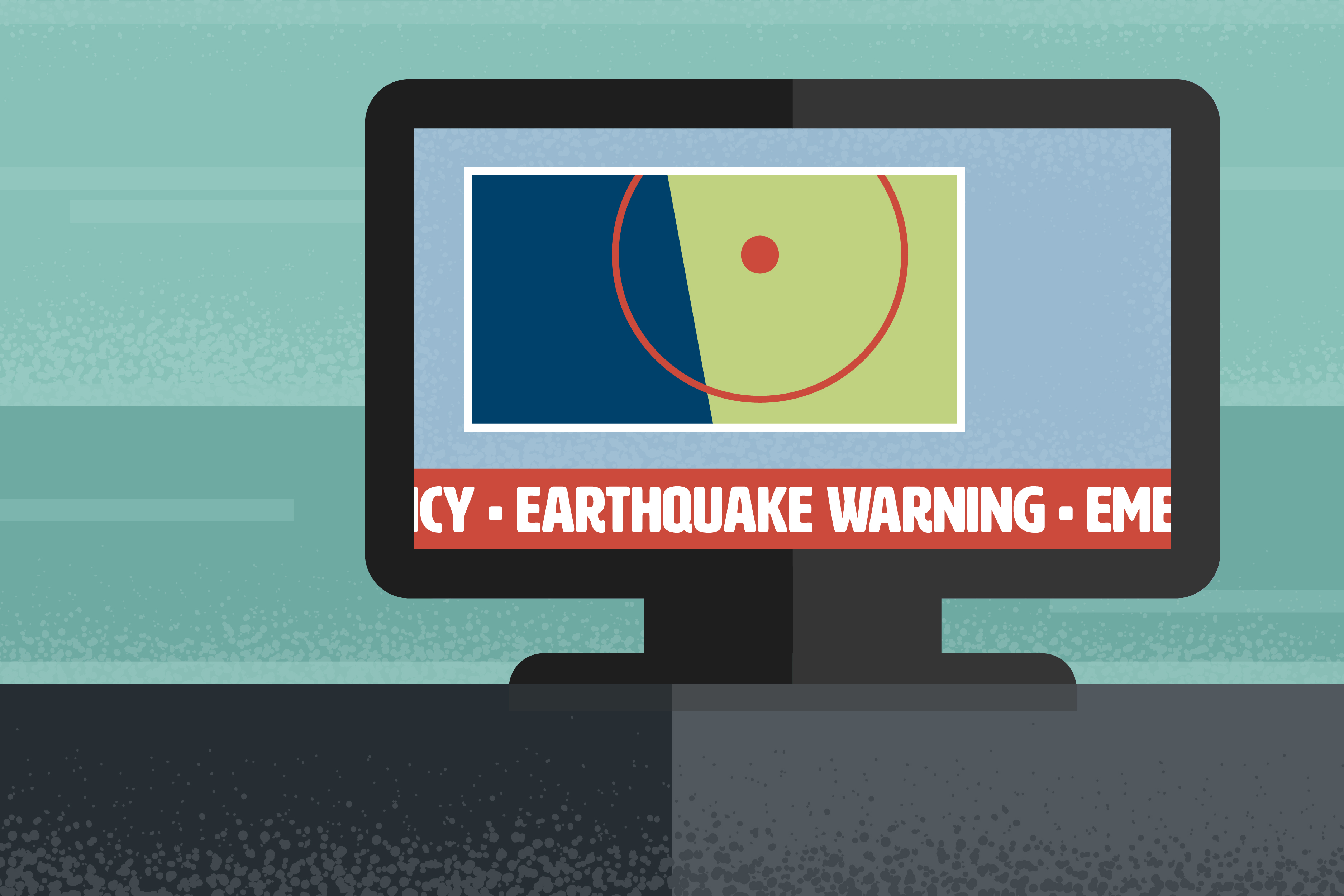
More comprehensive early earthquake warning systems exist in nations like Mexico and Japan
In September 2017, Mexico was rocked by a series of earthquakes. A powerful tremor of magnitude 8.1 struck off the southern coast on Sept. 7, followed by a magnitude 7.1 quake further inland on Sept. 19. Early warnings were sent out through television sets, loudspeakers and Twitter, giving people precious seconds of time to prepare for an earthquake in a seismically active area.
“Earthquake waves are caused by slip on faults and travel at the speed of sound in rock, about a few kilometers per second”, said Alex Morelan, a fifth-year PhD candidate in the Department of Earth & Planetary Sciences. “Seismic stations and computers near the fault that slipped detect the earthquake in a couple seconds or less and send the warning out to the surrounding region that an earthquake has occurred, including an estimate of when shaking will start in different areas. The reason this works is that the earthquake waves travel significantly slower than electronic signals, which travel at the speed of light. This means that the further the city is from the fault that slipped in the earthquake, the more warning a city will have before shaking starts.”
Early earthquake warnings alert people to tremors which are actively occurring. This differs from future projections about when the next quake will strike.
“Forecasting involves probabilistic models, and there’s no broad agreement on what you should use; that’s one thing”, said John Rundle, an interdisciplinary professor in the physics, civil engineering and geology at UC Davis. “The second thing is that in places like California, the probability of a major earthquake is generally pretty low. It’s challenging to do forecasting in a low probability environment because it’s difficult to test forecast models. The events happen pretty rarely, and that makes it hard.”
Mexico developed SASMEX, the Mexican Seismic Alert System, to help protect the population from frequent earthquakes. A massive, deadly earthquake in 1985 made clear the need for such an alert system. Additionally, Mexico is vulnerable to powerful quakes off of its southern coast caused by the Cocos plate sliding beneath the North American Plate. Tsunamis can be generated this way when the ocean floor is uplifted.
Japan has similar concerns of powerful earthquakes generated offshore and is also vulnerable to earthquakes inland. A devastating quake under the city of Kobe killed over 6,000 people and cost $200 billion in 1995. To help prevent a disaster of the same scale, the island nation launched a system in 2007 called J-Alert, which sounds out emergency broadcasts in five languages through text messages, loudspeakers and radio. The J-Alert system will even activate television sets which are off to help alert people to volcanic eruptions, typhoons, earthquakes and tsunamis.
“In order to get a tsunami, you need a vertical motion of the ocean floor to move the water up, and then pile it up, and then it goes out,” Rundle said. “That’s why you have major tsunamis in these areas like Japan, near subduction zones.”
California is at less of a tsunami risk due to the location of its fault lines, which tend to be inland. However, large tsunamis have hit the Pacific Northwest due to a complicated fault zone north of Cape Mendocino that includes subduction zones where powerful earthquakes have historically been generated.
“As a state with numerous faults, such as the San Andreas, many areas in California are very vulnerable to seismic shaking,” said Veronica Prush, a fourth-year PhD candidate in the Department of Earth & Planetary Sciences at UC Davis. “Areas of particular concern tend to be large cities, such as San Francisco, the general Bay Area and Los Angeles.”
The main concern for early earthquake warning systems in California is the proximity of large metropolitan areas to potential tremor epicenters.
“The thing about California is we built our major cities on these faults,” said Dr. Michael Oskin, the chair of the Department of Earth & Planetary Sciences. “San Francisco is straddled by the San Andreas Fault and the Hayward Fault. In Southern California, the San Andreas sits between the desert and the mountains north of Los Angeles, but then it comes in towards the eastern part of the urban area near San Bernardino.”
The further away large urban areas are from earthquake epicenters, the more time early earthquake warning systems can give people to prepare themselves. Japan and Mexico can often give people 30 seconds to a minute of preparation, while similar systems in California would only offer the people of Los Angeles or San Francisco a few moments. At worst, city dwellers would feel the shaking while their phones lit up with warning alerts.
“Warning systems can help, but that depends a lot on where the earthquake is,” Oskin said.
The best way to prepare for earthquakes in seismically active states like California is to construct homes, offices and factories strong enough to withstand severe shaking.
“As long as it has adequate shear bracing, wood frame homes are light and they’re not going to break apart,” Oskin said.
The powerful earthquake near Mexico City in 1985 killed around 10,000 people, but the Sept. 19 quake in 2017 claimed less than 400 lives due to regular earthquake drills and stricter building codes.
“We don’t have anything other than construction that we can do, because you can’t affect the earthquake itself,” Rundle said. “You have to build your house so it’s resilient.”
A powerful earthquake has not caused grave damage or significant loss of life in California in quite a few years. To better prepare for this inevitable event, California has been developing an early earthquake system called ShakeAlert, which recently entered a new phase of testing in January. More seismic measuring stations and routine earthquake drills could help Californians better prepare for a devastating earthquake near its dense metropolitan areas.
“I don’t think people are prepared as much as they should be,” Rundle said.
Written by: George Ugartemendia — science@theaggie.org



